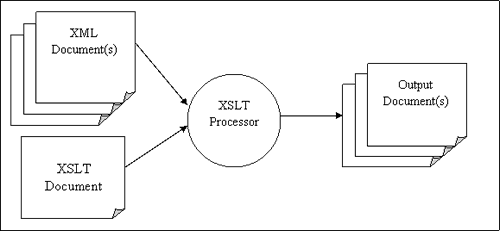| Home > XML > TPEX > XSLT |
|
| eXtensible Stylesheet Language Transformation (XSLT) | |
eXtensible Markup Language (XML) documents contain all the information necessary to define and understand the data contained within the document. Although the data in XML documents can be read by human eyes, it’s typically not easily understood. eXtensible Stylesheet Language Transformation (XSLT) allows the data in XML documents to be formatted in a manner that is much easier for humans to understand. Simply put, the basic function of an XSLT document is to transform an XML document (or documents) into a new file (or files) in another format – plain text, HTML, or other XML documents. The XSLT document author can choose specific data fields to format, use different methods to sort the data, use conditional statements to format data, and merge/relate the data in multiple XML source documents. XSLT documents, like XML itself, are flexible and scalable. The basic XML document transformation process is illustrated in Figure 1.
As of January 16, 2007, XSLT 1.0 was the official W3C Recommendation. The stylesheets at the above links were written using XSLT 1.0. More information about XSLT may be found at the W3C website. |
